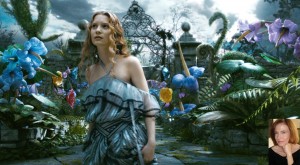Alice is a girl of many movie faces In Focus by Richard Crouse FOR METRO CANADA March 05, 2010
 Will the real Alice Kingsley please stand up?
Will the real Alice Kingsley please stand up?
Is she the 19 year old rebel played by Mia Wasikowska in this weekend’s 3-D Alice in Wonderland directed by Tim Burton? Or the insane character of America McGee’s video game Alice? Or the martial arts instructor of a recent Syfy channel adaptation?
In fact, she’s all those people and more.
Originally written in 1865 by Lewis Carroll, the little girl who found a world of wonder down the rabbit hole, has become one of the more enduring and malleable characters of literature and film.
“The books are a kind of Rorschach test, a screen onto which people project their own ideas,” says The Mystery of Lewis Carroll author Jenny Woolf.
Alice first got the big screen treatment in 1903 in a 12-minute silent version featuring rudimentary special effects of the hero changing sizes. Played by Mabel Clark, (who was also employed on the set as a “help-out girl,” making costumes and running errands), the look of this traditional retelling closely resembles the book’s original illustrations. Out of print for many years, it’s now available as a DVD extra on the recent reissue of the 1966 Alice starring Peter Sellers.
The Sellers version, a made-for-BBC television movie, is as mad as a hatter. Director Jonathan Miller sought to boil the production down to the essentials, to dispense with the “japing and game play” of earlier versions. To that end none of the strange creatures Alice meets along the way are played by actors in animal costumes. This approach could have fallen flat, but when you have actors like John Gielgud and Peter Cook accentuating the wonderful dialogue rather than the flashy production design, it works. Add a trippy soundtrack by Ravi Shankar and some veiled drug references and you get a film that could only have been made at the height of the Swingin’ Sixties.
It’s hard to know what Alice Liddell, the young girl who inspired the movie would have thought of any of the wild and wacky versions of the story, but we do know she enjoyed the 1933 Paramount version.
“I am delighted with the film and am now convinced that only through the medium of the talking picture art could this delicious fantasy be faithfully interpreted,” she told the New York Times. “Alice is a picture which represents a revolution in cinema history!”
Leave a Reply
You must be logged in to post a comment.
